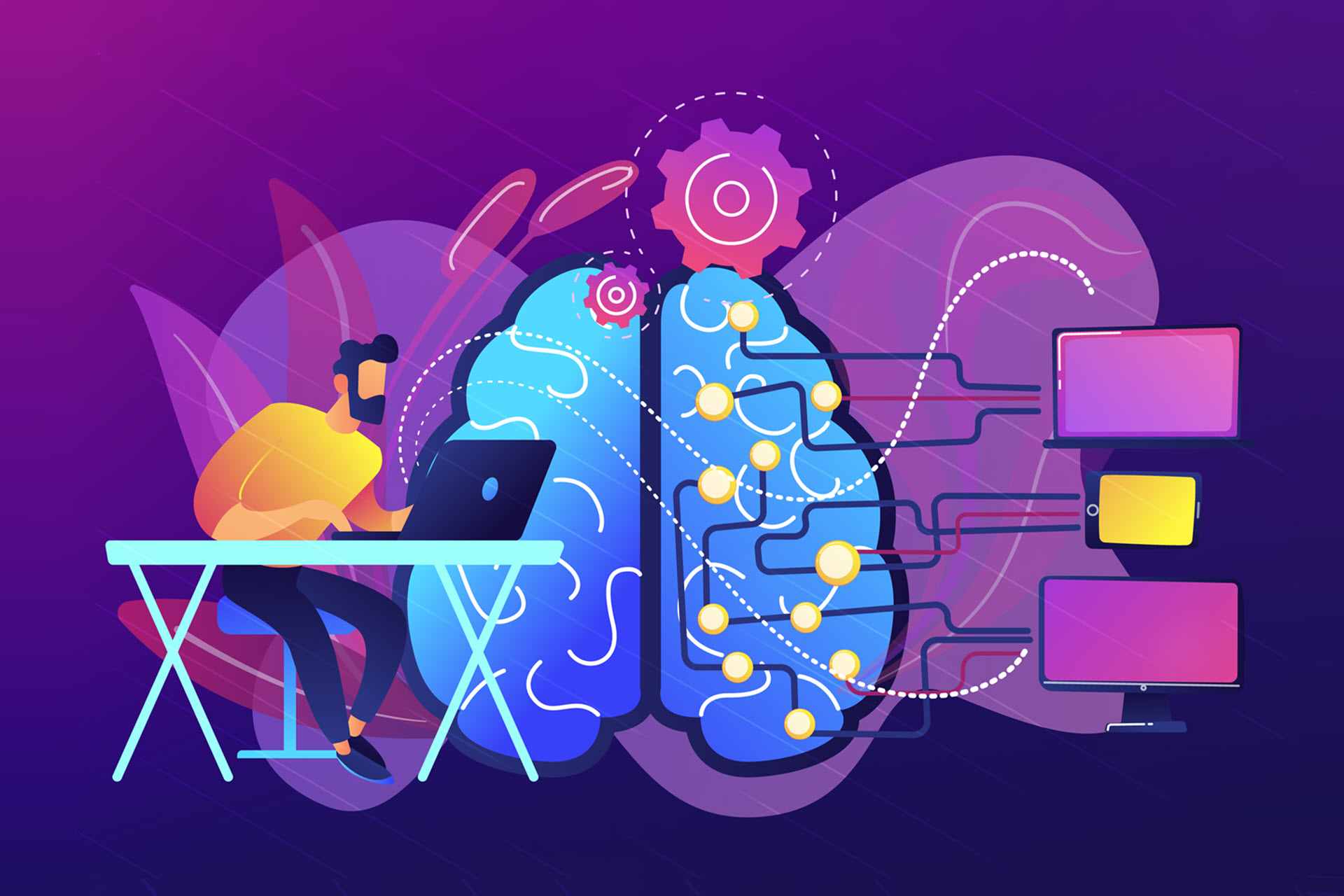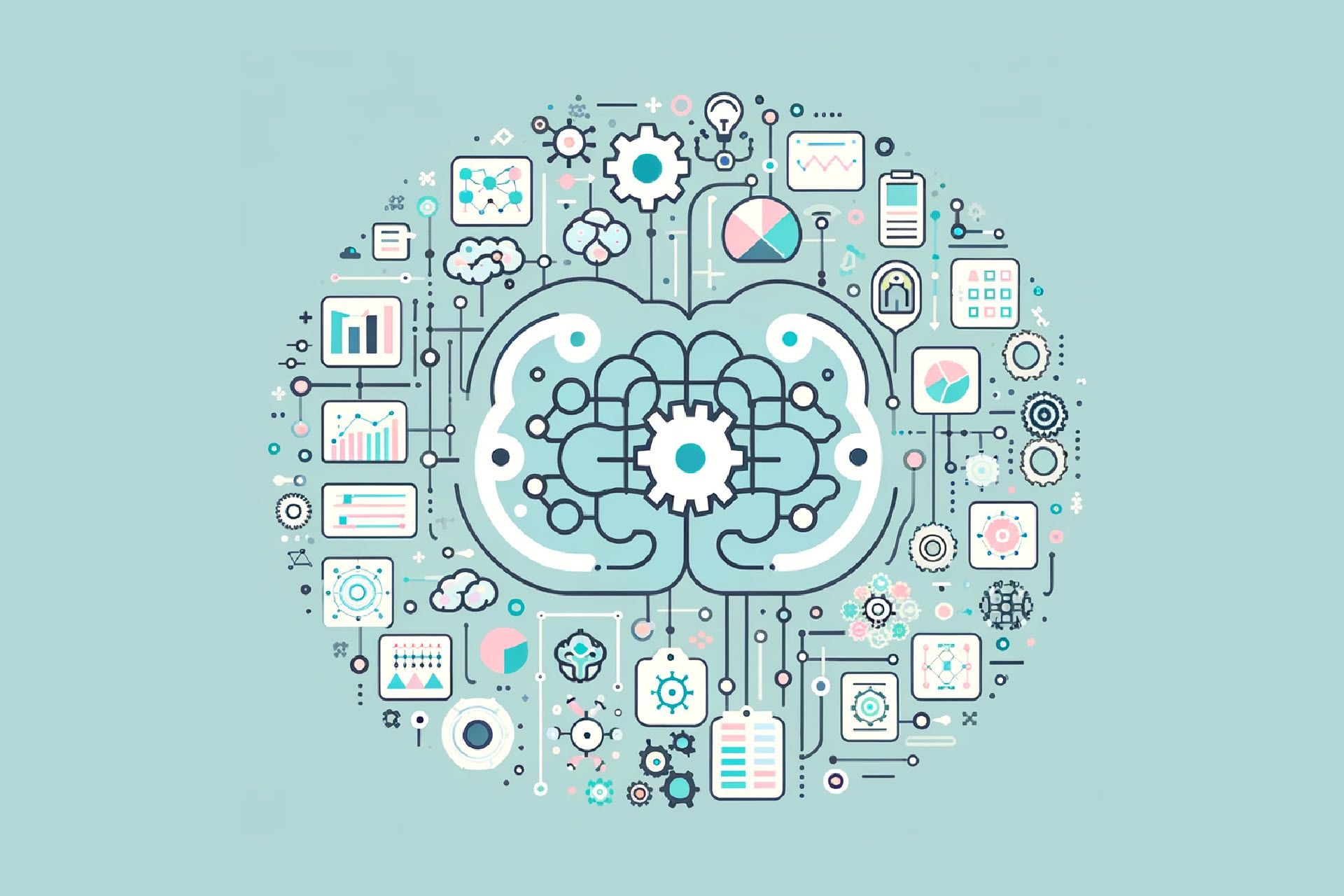Artificial intelligence (AI) enables computers to simulate human-like cognition and problem-solving capabilities. On its own or combined with some other tech (sensors, geolocation, robotics), AI adeptly performs tasks that traditionally require human intelligence or intervention.
Digital assistants like Siri or Alexa, fully autonomous vehicles, and generative AI platforms like OpenAI's ChatGPT are just a few examples of what AI offers. Yet, despite these incredible applications, artificial intelligence continues to evolve rapidly.
This article is a complete guide to AI that takes you through everything you must know about this groundbreaking tech. Jump in to learn how AI works and see how companies use it to boost operational and cost efficiency.
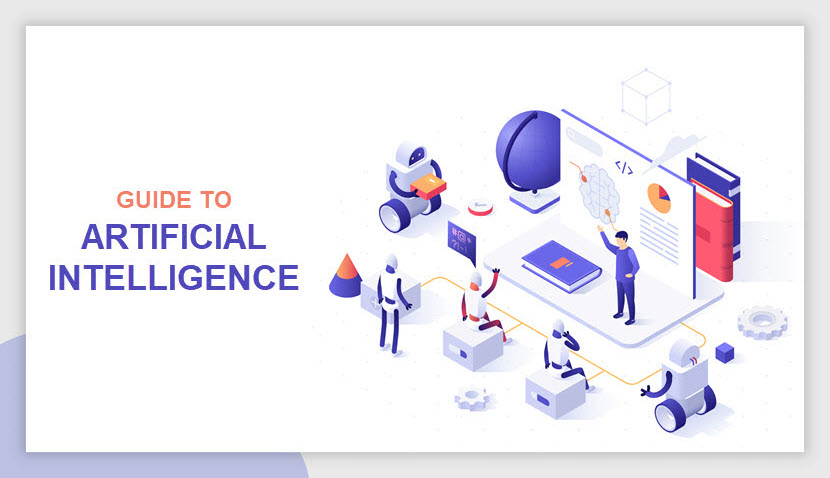
What Is Artificial Intelligence?
Artificial intelligence is the ability of a computer to simulate cognitive processes and perform tasks that require human intervention or expertise. The ability to simulate human-like intelligence and adaptability enables AI to execute tasks non-AI machines cannot perform, such as:
- Understand and generate human language.
- Recognize valuable patterns in large data sets.
- Analyze complex scenarios and make case-by-case decisions.
- Learn from inputs and improve performance over time without additional programming.
- Generate new content, designs, or solutions.
- Perform tasks in dynamic and unstructured environments.
AI systems learn to perform tasks by processing massive amounts of data and identifying patterns within that data. Humans supervise this learning process to reinforce good decisions and discourage bad ones. However, adequately trained AI systems require no supervision to perform assigned tasks.
Developers write AI-based applications in various programming languages. The five most common choices are Python, R, Java, C++, and Julia, languages that have features useful for AI development, such as:
- A rich selection of libraries and frameworks.
- Support for object-oriented programming paradigms.
- Extensive documentation and resources for learning.
- Cross-platform compatibility.
- Scalability for handling large data sets and complex algorithms.
- Integration with hardware acceleration technologies.
- Robust tools for debugging and profiling code.
As a field of computer science, artificial intelligence encompasses machine learning (ML) and deep learning. These disciplines are highly interconnected:
- AI is a broad discipline focused on developing systems that can carry out tasks typically requiring human intelligence and reasoning.
- ML is a subset of AI focused on algorithms that learn from data and make decisions without requiring explicit programming.
- Deep learning is a subset of ML that focuses on identifying patterns in input data via artificial neural networks (ANNs).
Our guides to neural networks and deep nets offer an in-depth look at how ANNs use interconnected nodes to mimic the behavior of the human brain.
Augmented Intelligence vs. Artificial Intelligence
Artificial intelligence and augmented intelligence are related but distinct concepts. Augmented intelligence refers to the use of AI techniques (ML, natural language processing, computer vision, deep learning, etc.) to complement human abilities.
Examples of augmented intelligence include:
- Locating important info or specific data in business reports.
- Providing insights into medical scans to assist radiologists.
- Categorizing and prioritizing emails.
- Analyzing financial data to flag suspicious activities that require investigation.
- Summarizing lengthy legal documents and contracts.
- Analyzing social media data to identify trends, sentiment, and customer preferences.
- Generating code suggestions and providing debugging assistance.
Whereas AI focuses on creating autonomous systems, augmented intelligence emphasizes collaboration between humans and computers. Augmented intelligence provides us with insights, recommendations, and tools that speed up work and enhance our efficiency.
Learn how to install DeepSeek-R1, a powerful open-source AI language model that uses advanced reasoning.
What Is Generative AI?
Generative AI is a class of AI models capable of designing original content. Unlike traditional AI systems, which focus on tasks such as input recognition and classification, generative AI models create new content inspired by the input data the model was trained on.
The most prominent generative AI technique is the generative adversarial network (GAN). A GAN consists of two neural networks (a generator and a discriminator) trained simultaneously through a competitive process:
- The generator learns to generate new data samples (e.g., images, text, sound) based on random noise or input data.
- The discriminator learns to distinguish between actual data samples and fake samples generated by the generator.
By pitting the generator against the discriminator, the GAN learns to generate high-quality, realistic outputs. The generator learns to create data samples that are so convincing that the discriminator cannot differentiate between the output and training data.
Some of the most common uses of generative AI include:
- Generating images of objects, landscapes, or people based on provided descriptions.
- Creating original stories or poetry.
- Writing marketing materials, such as product descriptions and social media posts.
- Generating new video sequences or modifying existing videos by altering objects, backgrounds, or visual effects.
- Creating new songs or variations of existing music based on patterns learned from training data.
- Generating synthetic data to augment existing data sets for training ML models.
Generative AI offers immense opportunities to boost human creativity and innovation. However, it also introduces significant ethical challenges that demand careful oversight and regulation. The main concerns revolve around the misuse of generated content, potential job displacements, and copyright implications.
Learn more about knowledge generation, including how it works, and how businesses use it to optimize workflows and reduce OpEx.
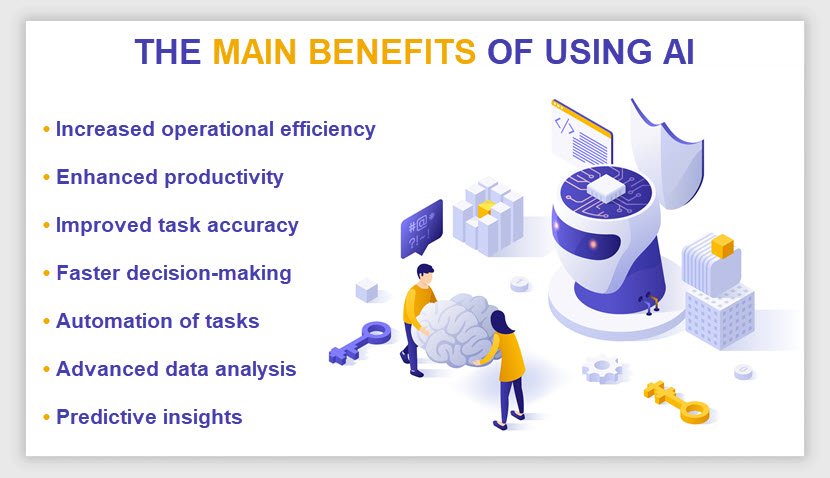
Why Is Artificial Intelligence Important?
Artificial intelligence is crucial for businesses due to its potential to speed up operations and free the workforce from repetitive tasks. Here's why AI is important for businesses:
- Automation. AI enables companies to automate various tasks, which speeds up production cycles. Repetitive tasks become more reliable, while the workforce gets to focus on innovation and revenue generation instead of time-consuming tasks.
- Data insights. An AI model can analyze vast amounts of data to uncover valuable insights and trends that may not be apparent to human analysts. These insights help optimize business strategies and identify new opportunities.
- Reduced costs. AI-powered chatbots, virtual assistants, and robotic process automation (RPA) systems automate various business processes. As a result, companies reduce operational expenses and get to reallocate funds to other business areas and initiatives.
- Better risk management. AI programs reliably detect anomalies, identify potential risks, and ensure regulatory compliance. Many businesses use AI to mitigate operational risks and enhance overall security.
Artificial intelligence is also important from a non-business perspective. AI has the potential to revolutionize healthcare by improving diagnostics, treatment planning, drug discovery, and patient care. In education, AI enables adaptive learning platforms and personalized learning pathways.
How Does AI Work?
In its simplest form, artificial intelligence works by taking in vast amounts of input data, interpreting it, and providing an output based on that data. Here's a breakdown of each of these steps:
- Ingesting input data. AI systems can ingest both structured and unstructured data in various formats (text, images, sensor readings, videos, etc.). This input data is either completely raw or preprocessed, depending on the model's purpose.
- Interpreting ingested data. AI algorithms analyze input data to identify patterns, correlations, and insights. Learning algorithms enable the AI model to adjust its internal parameters to better capture patterns and relationships in data.
- Providing an output. The final step involves the AI model making predictions or decisions based on data. Predictions involve forecasting outcomes based on input data, while decisions entail taking a specific action based on the input.
All AI models must go through a training phase before they start operating. During this phase, the system learns from training data by adjusting its internal parameters. This process involves minimizing a loss function that measures the difference between the model's output and the desired targets set by the model's admin.
Once sufficiently trained, the AI model makes reliable predictions or decisions when presented with new, previously unseen data. This process, known as inference, involves applying the learned knowledge to generate outputs or predictions based on brand-new inputs.
Technically, the training process never ends. Once deployed and integrated into a real-world setting, the AI model continues to learn from and adapt to real-life inputs to ensure optimal performance.
Check out our article on deep learning frameworks to see how companies drastically speed up the process of training new AI models.
Types of AI
There are two general types of artificial intelligence: narrow AI and strong AI. Both types have their own characteristics, capabilities, and applications. Let's examine each type to see what they offer.
Narrow (Weak) AI
Narrow artificial intelligence is designed and trained to perform a single or a small set of tasks within a limited context. Another common name for narrow AI is artificial narrow intelligence (ANI). Narrow AI has two main characteristics:
- Task-specific. Narrow AI executes only specific tasks or functions and has a relatively narrow range of capabilities.
- Limited domain. Narrow AI operates within a limited context. For example, a narrow speech recognition system can recognize and transcribe human speech but cannot understand the meaning of what's being said.
While limited in its purpose, narrow AI systems excel at their assigned tasks. For example, a well-trained narrow AI program for image classification categorizes images with more precision and speed than more general AI models. Here's why narrow AI programs perform their tasks so well:
- Specialized training. Narrow artificial intelligence undergoes extensive training using large data sets tailored to its specific task(s). This training enables models to achieve high levels of accuracy and efficiency in performing their roles.
- Focused optimization. Narrow AI systems are fine-tuned for their designated tasks. Their algorithms are specifically tailored to the characteristics of input data and the task requirements.
- Problem complexity. Narrow AI systems operate within well-defined problem domains with clear objectives and constraints.
Narrow AI is widely used in various industries and applications. Examples of narrow AI applications include virtual personal assistants like Siri or Alexa, language models like ChatGPT, fraud detection algorithms in banking, and programs in autonomous vehicles.
General (Strong) AI
General AI possesses the ability to understand, learn, and apply knowledge across a wide range of tasks and domains. Unlike narrow AI, which is trained for specific tasks, general AI exhibits universal human-like cognitive abilities, including reasoning, problem-solving, and creativity. Another common name for general AI is artificial general intelligence (AGI).
General AI can perform a wide range of cognitive tasks without requiring specialized training. These systems learn autonomously from experience, feedback, and interactions with their environment. As they learn, general AI models acquire new skills and generalize knowledge from one task or domain to another, similar to the way humans learn.
Some conceptions of general AI include emotional intelligence, allowing AI models to perceive, understand, and express emotions. This aspect of AI involves recognizing human emotions, empathizing with users, and adapting behavior in response to emotional cues.
General AI remains a theoretical concept and has not yet been achieved. While significant progress has been made in AI research and development, we're still far from creating a commercially available system with the breadth and depth of human intelligence.
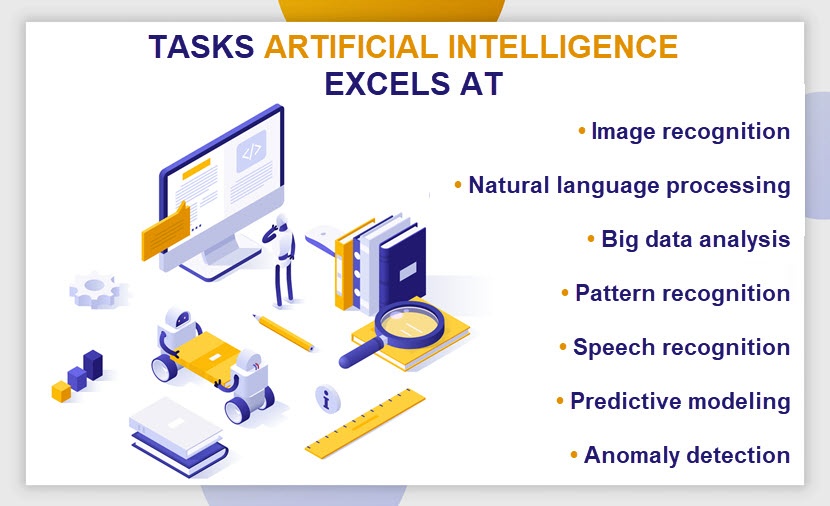
AI Learning Models
Artificial intelligence learning models are methodologies AI systems use to learn patterns in input data and improve their performance. Here are the four main types of AI learning models:
- Supervised learning. This AI learning model trains a system on labeled data. Each input is associated with a corresponding output or target label, which helps the model learn the input-output relationship.
- Unsupervised learning. This learning model trains a system on an unlabeled data set. The system independently learns to cluster similar data points and discover underlying trends.
- Semi-supervised learning. This AI learning model combines supervised and unsupervised learning by using a mix of labeled and unlabeled data during training.
- Reinforcement learning. This learning model involves training AI to interact with an environment and learn through trial and error. The model receives feedback in the form of rewards or penalties based on its actions and learns by maximizing cumulative rewards over time.
Each learning model has unique characteristics and applications, making them suitable for different tasks and domains. Here's what each model excels at:
- Supervised learning is commonly used in tasks such as image classification, sentiment analysis, predictive maintenance, and medical diagnosis.
- Unsupervised learning is excellent at customer segmentation, anomaly detection, topic modeling, data compression, and feature extraction.
- Semi-supervised learning is often applied in speech recognition, image recognition, document classification, and fraud detection.
- Reinforcement learning excels at game playing, robotics, autonomous vehicles, and recommendation systems.
Remember that the lines between learning models are not always clear-cut. Many AI models employ a hybrid approach, combining multiple or all four learning paradigms.
Check out our in-depth list of artificial intelligence examples that illustrate wide use of AI.
AI Applications
Artificial intelligence has fitting use cases across a wide range of industries. Here are some of the markets and industries where AI applications are having the biggest impact:
- Healthcare. AI applications in healthcare include medical imaging analysis, drug discovery, 24/7 patient monitoring, and virtual health assistants.
- Finance. Financial organizations frequently use AI for risk management, fraud detection, algorithmic trading, customer service, and personalized financial recommendations.
- Retail. Retailers use AI for demand forecasting, recommendation systems, 24/7 chatbots, and autonomous checkout systems. Many organizations also use artificial intelligence to optimize supply chain and inventory management.
- Manufacturing. Many manufacturers use AI for predictive maintenance of equipment, defect detection, autonomous robotics, and adaptive manufacturing.
- Transportation. AI-driving vehicles, predictive fleet maintenance, and traffic management systems are the most common AI applications in the transportation industry.
- Energy and utilities. The usual AI use cases in this market are energy demand forecasting, renewable energy integration, and smart grid management.
- Marketing. Many marketers use AI for customer segmentation, content optimization, SEO analysis, ad targeting, CRM integration, and real-time campaign optimization.
- Education. The most common AI applications in education are intelligent tutoring systems, adaptive learning platforms, and automated grading systems. Generative AI also helps educators craft coursework and other teaching materials.
- Public services. Governments are increasingly adopting AI for various purposes, including public safety, traffic management, environmental monitoring, and day-to-day administrative tasks.
- Cyber security. Artificial intelligence has many applications in cyber security, primarily in the fields of anomaly detection, behavioral threat analytics, and identification of new attack vectors.
Check out our article on the market's top AI processors if you plan to start running AI workloads using in-house hardware.
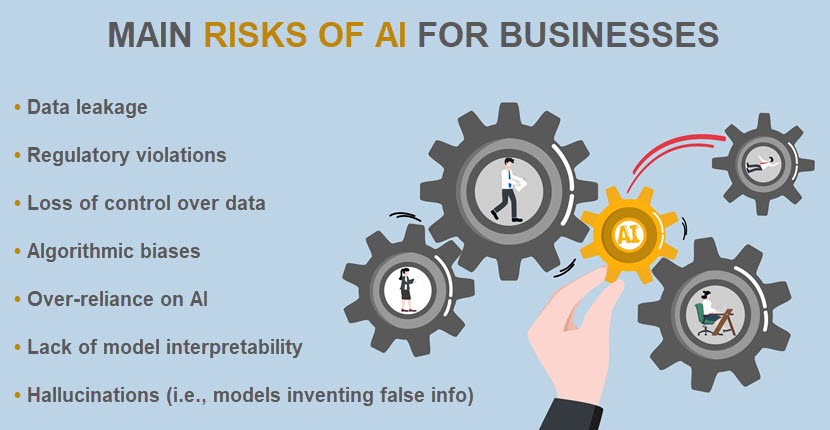
Challenges of Artificial Intelligence
While AI offers numerous benefits, the tech also presents several considerable drawbacks. Here are the main challenges of adopting and using artificial intelligence:
- Lack of explainability. Admins often struggle to understand how complex AI models arrive at their conclusions. This lack of transparency undermines trust in AI systems and raises concerns about reliability.
- Lack of quality training data. Artificial intelligence requires vast amounts of high-quality data for training. This data is often difficult and expensive to acquire, which poses a problem for many potential use cases.
- Privacy concerns. The use of AI raises considerable concerns concerning data privacy and security. Preventing unauthorized access to sensitive files, data breaches, misuse of personal info, and data leaks are all significant challenges.
- Hallucinations. AI models sometimes inadvertently "hallucinate" (i.e., inexplicably give false outputs). This issue commonly occurs when a model is trained on insufficient or biased data.
- Legal concerns. Using AI in content generation, such as automated writing, video creation, image synthesis, and music composition, raises legal questions about ownership and intellectual property rights.
- Safety assurances. AI systems in safety-critical domains such as healthcare or transportation must meet stringent safety standards. Ensuring the reliability of AI systems is not easy and requires rigorous testing and verification processes.
- Bias concerns. AI models inherit biases from training data, which often leads to unfair or discriminatory outputs. Ensuring a complete lack of bias is a considerable challenge due to the size of an average AI training data set.
- Malicious misuse. AI-powered tools can be misused for malicious purposes, such as creating convincing deepfake videos or conducting sophisticated social engineering attacks.
Check out social engineering examples to see just how devastating these attacks are when companies are caught off-guard.
AI Governance & Regulations
The rapid advancement of artificial intelligence has outpaced the development of regulatory frameworks to govern the use of this technology. There is a clear need for official guidelines to address issues such as data protection, accountability, liability, and ethical standards.
The U.S. currently has no regulations governing the use of AI, but some current laws pertain to AI indirectly. For example, U.S. Fair Lending regulations require organizations to explain credit decisions to potential customers. This regulation indirectly limits the extent to which lenders can use deep learning algorithms due to their inherent lack of explainability.
AI regulations are challenging to develop and implement due to several factors:
- Rapid advancements. The field of AI is constantly evolving, and new applications are emerging at a rapid pace. Keeping up with these advancements and understanding their potential implications requires extensive monitoring and expertise.
- Diversity issues. AI encompasses a wide range of tech, each with unique characteristics and risks. Developing regulations that are flexible and adaptable enough to address the diverse landscape of AI is a massive challenge.
- Ethical considerations. AI raises complex societal and philosophical questions about fairness, transparency, privacy, and autonomy.
- Widespread use. Developing AI-related regulations that are harmonized across different countries and jurisdictions poses a significant challenge.
In October 2022, the White House Office of Science and Technology Policy (OSTP) published a "Blueprint for an AI Bill of Rights" that guides businesses on implementing ethical AI systems. In March 2023, the U.S. Chamber of Commerce also called for AI regulations in a comprehensive report.
The EU has taken a more pioneering step by agreeing on the AI Act in 2023, which is the world's first comprehensive AI law. This legislation aims to regulate AI systems, promote transparency, and ensure accountability for companies that decide to use artificial intelligence.
Note: Learn more about the EU AI Act - What it is, who does it apply to and what are the compliance requirements.
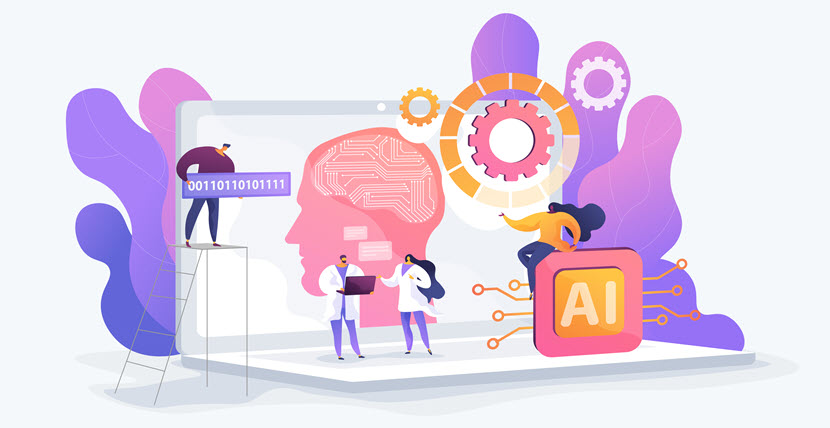
Start Using AI to Speed Up and Improve Day-to-Day Operations
If your business involves repetitive tasks with large data sets and a small margin of error, entrusting these tasks to an AI model is a no-brainer decision.
Now that you have a strong understanding of how AI works and what it offers, you have enough info to evaluate whether adopting AI at your organization would be a worthwhile investment of time and effort.
Next, refer to our comparison article to find out how AI and machine learning differ.
